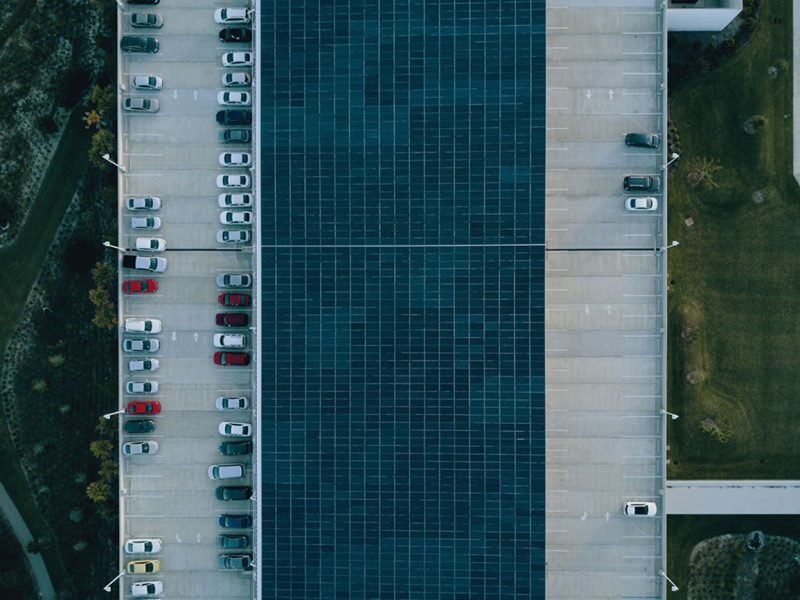
Apr
The Future of Parking Lots: A More Useful and Sustainable Approach
In bustling cities worldwide, the quest for a suitable parking spot has become an all-too-familiar and exasperating endeavour. Astonishingly, this routine activity consumes approximately one million barrels of oil daily, illustrating the sheer magnitude of its impact. According to a study conducted by the BPA, parking is deemed a stressful experience by 44% of the 2,000 drivers surveyed, who collectively spend an average of four days per year searching for available spaces. Remarkably, there are an estimated eight parking spots for every vehicle, occupying a staggering one-third of urban space in the United States alone. As Andy Cohen, co-CEO of Gensler architecture firm, aptly notes, “There are 500 million parking spaces in the United States and 325 million people.” Despite this abundance, the persistent challenge lies in the inadequate design and inconvenient locations of these parking facilities, leading to widespread frustration among drivers. Nevertheless, amidst a growing emphasis on sustainability and efficiency in public space utilisation, a transformative opportunity arises: the reinvention of traditional parking lots. These expansive and often vacant areas possess the potential to redefine urban landscapes, mitigate traffic congestion, and combat pollution, as highlighted by Rohit Bhargava in a thought-provoking LinkedIn post. By harnessing their immense untapped potential, parking lots can be reimagined into vibrant, multifunctional spaces that prioritise utility and sustainability.

Source: Get It
Globally, there is already a growing trend of architecture firms reimagining parking lots and garages, transforming these spaces into vibrant and functional establishments. In downtown Boston, for instance, a parking lot is set to be transformed into an affordable housing high-rise, spanning an impressive 30 stories. Similarly, Wichita, Kansas witnessed the conversion of a former parking garage into an apartment building back in 2018, while a former parking garage near downtown Cincinnati has been successfully repurposed into a thriving lifestyle hotel. These examples demonstrate the transformative power of architectural innovation. Internationally, organisations like Make Shift in the U.K. have been at the forefront of this movement, revitalising empty parking garages into bustling hubs for small businesses, artist studios, co-working spaces, and community venues. This wave of conversion is not entirely new; historical precedents, such as the conversion of a Manhattan “hotel for autos” into a warehouse in the 1930s, followed by its subsequent transformation into apartments, exemplify the adaptive nature of such spaces. However, the pace of these conversions has significantly accelerated in recent times, aligning with an increasing architectural vision that anticipates a future with fewer cars. Architects now envision and design new buildings with a forward-thinking mindset, promoting sustainable alternatives and imagining urban landscapes that prioritise the evolving needs of communities.
In addition to converting parking lots into individual-based structures, there is immense potential in utilising these spaces to foster community engagement and enhance sustainability. One innovative approach is the transformation of parking lots into urban gardens or green spaces that bring people together and promote a sense of shared ownership. After all, there is a growing trend of urban farming where it has been increasing by more than 30% in the past 3 decades in the United States alone. Imagine a vibrant neighbourhood where residents, both young and old, collaborate to create a beautiful garden, planting a variety of flowers, herbs, and vegetables. This endeavour not only beautifies the surroundings but also serves as a catalyst for community bonding and intergenerational interaction. Neighbours can come together, exchanging gardening knowledge and experiences, while simultaneously reaping the benefits of homegrown produce. It offers an opportunity for learning, fostering a sense of pride, and improving the overall well-being of the community. Moreover, the conversion of parking lots into urban gardens contributes to sustainability efforts in several ways. By repurposing underutilised parking lots, we reduce the carbon footprint associated with excessive concrete structures and create green pockets within urban landscapes. These gardens serve as micro-habitats for birds, insects, and other wildlife, promoting biodiversity in urban environments. They also contribute to improved air quality and help mitigate the urban heat island effect, making cities more liveable and resilient.
In conclusion, the transformation of parking lots and garages into functional and sustainable spaces represents a global architectural movement that is gaining momentum. From the conversion of parking lots into affordable housing high-rises to potentially sustainable urban gardens, architects are demonstrating their visionary approach towards the future. These initiatives not only address the pressing issues of urban congestion and environmental impact but also foster community engagement and revitalisation. As the world recognises the potential of adaptive reuse, it is evident that the redesign of parking spaces has evolved from a sporadic occurrence to a deliberate and strategic endeavour. By embracing this transformation, cities can unlock the hidden potential of underutilised spaces, promoting sustainable living, enhancing the quality of life, and creating vibrant urban landscapes for generations to come.
Done By: Rejina Khar, Zarif Ong & Elly Ken
Source: Non- Obvious Insights, Fast Company, The Christian Science Monitor, International Parking and Mobility Institute, The Boston Globe, The Wichita Eagle, Building Design + Construction, Research Gate & Phys Org

